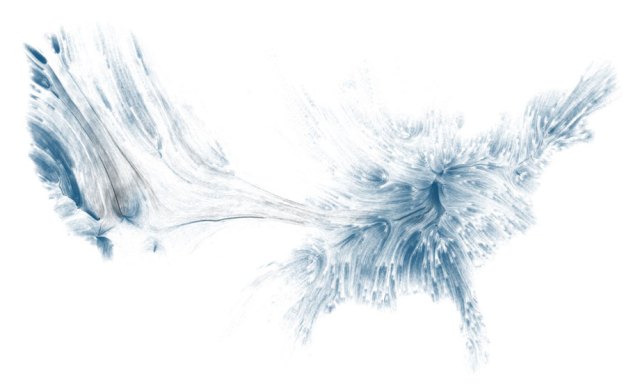The Two projects discussed in this Looking Outwards are the Zaha Hadid Volu Pavilion and Water Drawing Project.
The Volu Pavilion appears to be made from a continuous piece and features an oval roof that tilts downwards to create a shade for dining. Comprised of a series of structural bands collecting at the spine and expanding overhead, the patterning of the pavilion is optimized to be at mose singly curved.

The second project is the Drawing Water Project which collects national water consumption data with rainfall data into a series of maps. The data are parsed with python scripts and each line in the drawing corresponds to a daily rainfall measurement. The length of the line and its initial placement are dtermined by the amount of rainfall measured and where it fell. The final placement and color of each line are determined by the influence of urban water consumers. When the rainfall is pulled farther from where it fell, it changes color from blue to black. Such a mapping strategy creates an interesting artistic and informational drawing that tells information in a more direct way.

What I find the two projects interesting is that both projects demonstrate a strong sense of visual impression, no matter in 3D or 2D forms. Such strategies can be learned to apply to the final project for visual aesthetic pleasure. Meanwhile, both projects give a more interaction based opportunity to investigate either the law of physics may impact on the patterning of the structure or the data of rainfall overtime can change the overal composition of the drawing. Both projects definitely inspire me with such interactive quality and the strong flexibility and enlighten me to make a final project that can be a combination of generative art, interactive art, dynamic drawing, and computational drawings.
![[OLD FALL 2019] 15-104 • Introduction to Computing for Creative Practice](wp-content/uploads/2020/08/stop-banner.png)